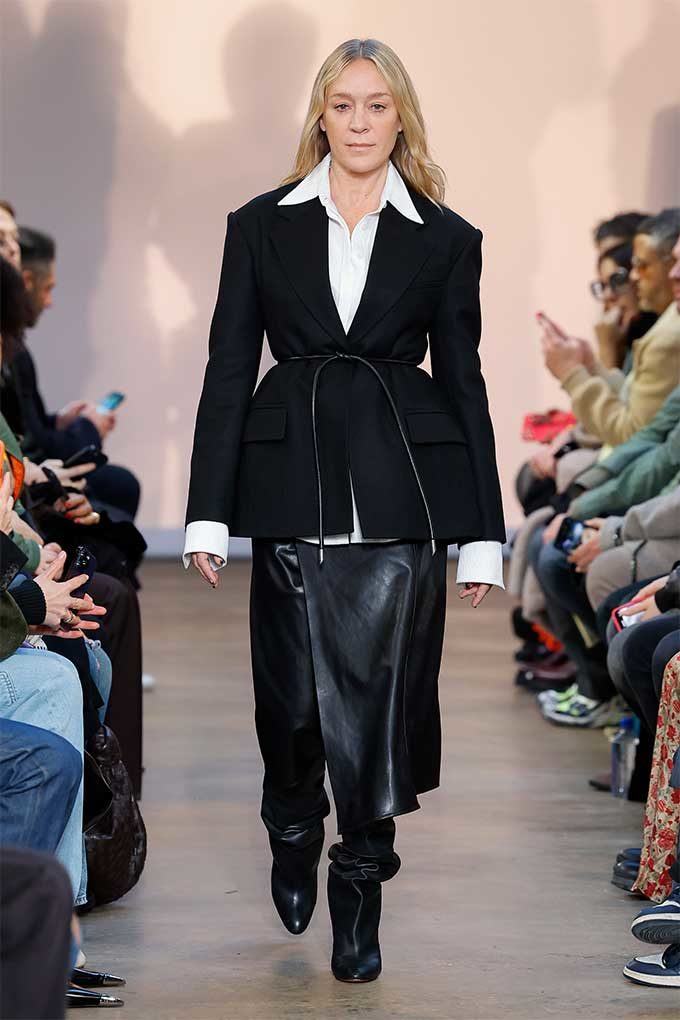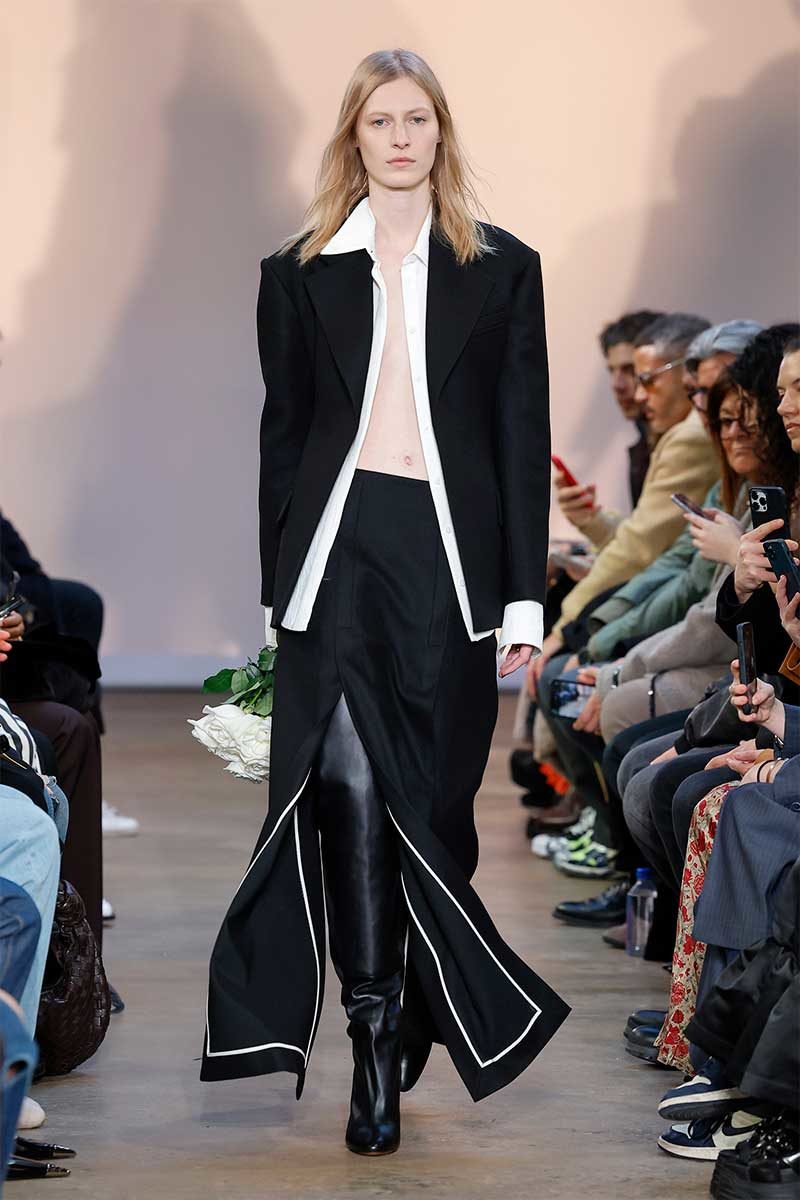Chloe Sevigny opened the Proenza Schouler show today. She’s worn Jack McCollough and Lazaro Hernandez’s clothes since the beginning; they were New York ingenues together 20 years ago. Now, Sevigny has a young child and balances motherhood with movie and TV roles; her Poker Face co-star Natasha Lyonne was in the front row.
This wasn’t an anniversary show, the designers insisted at a preview in their Soho studio, but a scroll through the Vogue Runway archive confirms that fall 2003 was their first post-Parsons graduation season. In any case, they said they’ve been taking stock, thinking about the friends and customers they’ve made over two decades. “This is our most personal collection yet,” said McCollough. “It was less revolving around a theme, more looking at the actual women in our lives: What is it they want?”
Like Sevigny and Olympia Scarry, who walked later a few looks later, the women in McCollough and Hernandez’s lives have grown up, and grown out of some of the Proenza Schoulerisms they’ve honed over the years. Prints were kept to a minimum here. The ones that did turn up were remnants from past collections, and only appeared as the linings of dresses, visible through a side-slit in the midi-length skirt, or on straps pulled off the shoulders and left to peplum at the waist. There was no room for ruffles or bows, either. The only real embellishment they used was white pom pom fringe on a black velvet dress, but it was mostly obscured by the charcoal wool skirt that their stylist Camilla Nickerson, another friend they mentioned by name, layered over it.
Other signatures stayed in the picture, but in updated versions. A pair of narrowly cut velvet shirt dresses made with dyed ice cubes that dripped their deep colors from neck to hem—indigo fading to cobalt, and chocolate brown dissolving into silvery gray—were evocative of their best-selling velvet tie-dye dresses of fall 2018, only subtler, more adult. The spongy, stretchy evening numbers with the sequins “baked in” were elaborations of simpler t-shirt dresses from a couple of pre-collections ago.
In the studio Hernandez said, “it’s about using our ingredients and not throwing it all out and starting from scratch every season.” If you looked closely you could see that the short sleeves were differently shaped. Other knits were constructed in a similarly askew way; they twisted across the body, elevating them out of the ordinary.
Not that Hernandez and McCollough have anything against the everyday. Over sounds by the Venezuelan musician Arca, Sevigny’s voice was on the soundtrack, reading “diary entries” written by the author Ottessa Moshfegh, with whom they’ve collaborated before, “kind of like an inner monologue.” Clothes-wise, the idea was to make an art of the everyday. By adding vertical zippers to the back of blazers that flashed a hint of skin but also enhanced ease of movement, by whipping up a hoodie in the softest, plushest knit, and by cutting “jeans” in a glossy gold leather, a nod to Helmut Lang, a few of whom’s runway looks were pinned to the mood board along with photos of their Sevigny et al. The only thing that would have driven the message home more is if more of those friend-muses joined her on the runway.
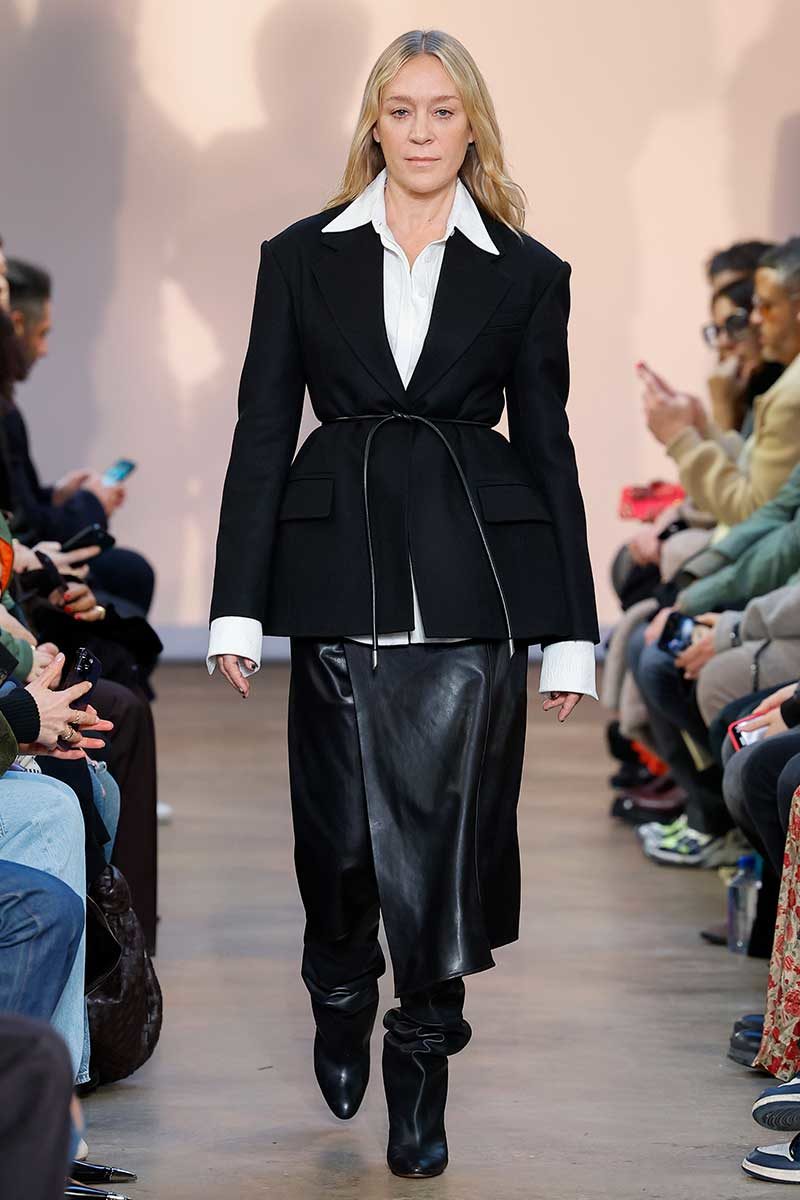
1 / 9

2 / 9

3 / 9
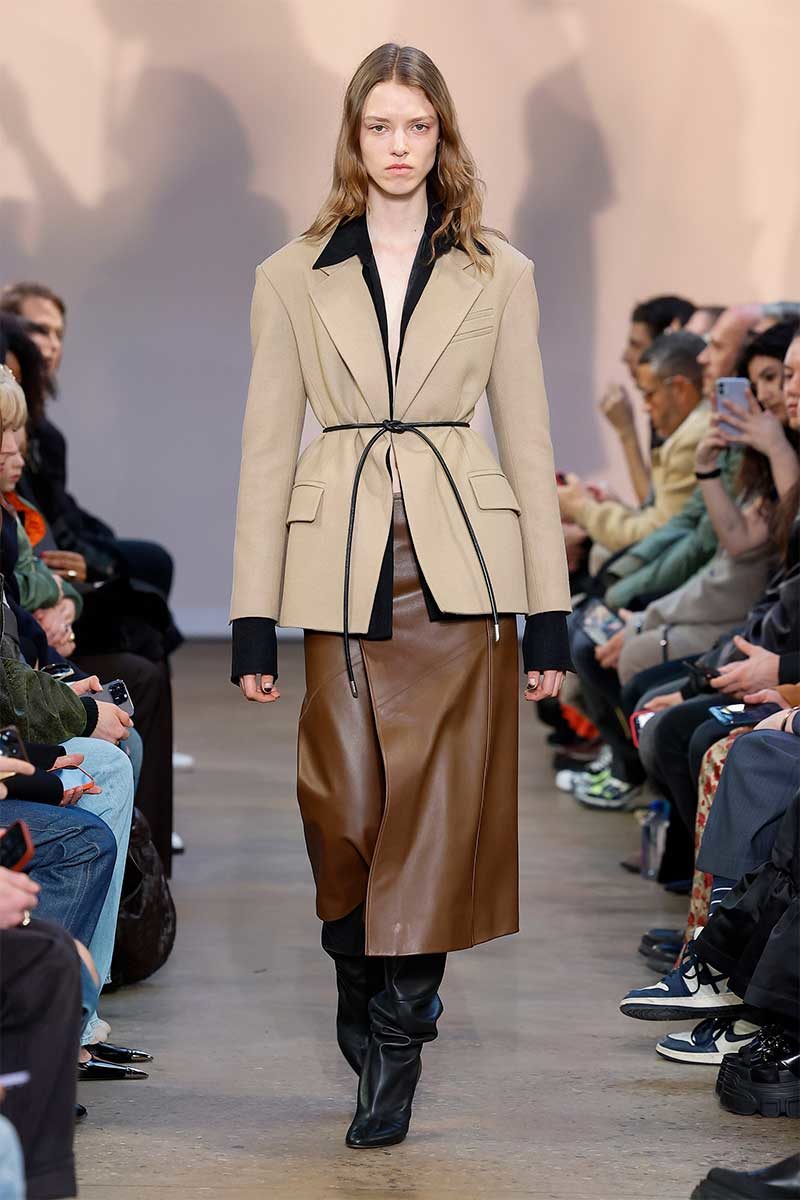
4 / 9

5 / 9

6 / 9
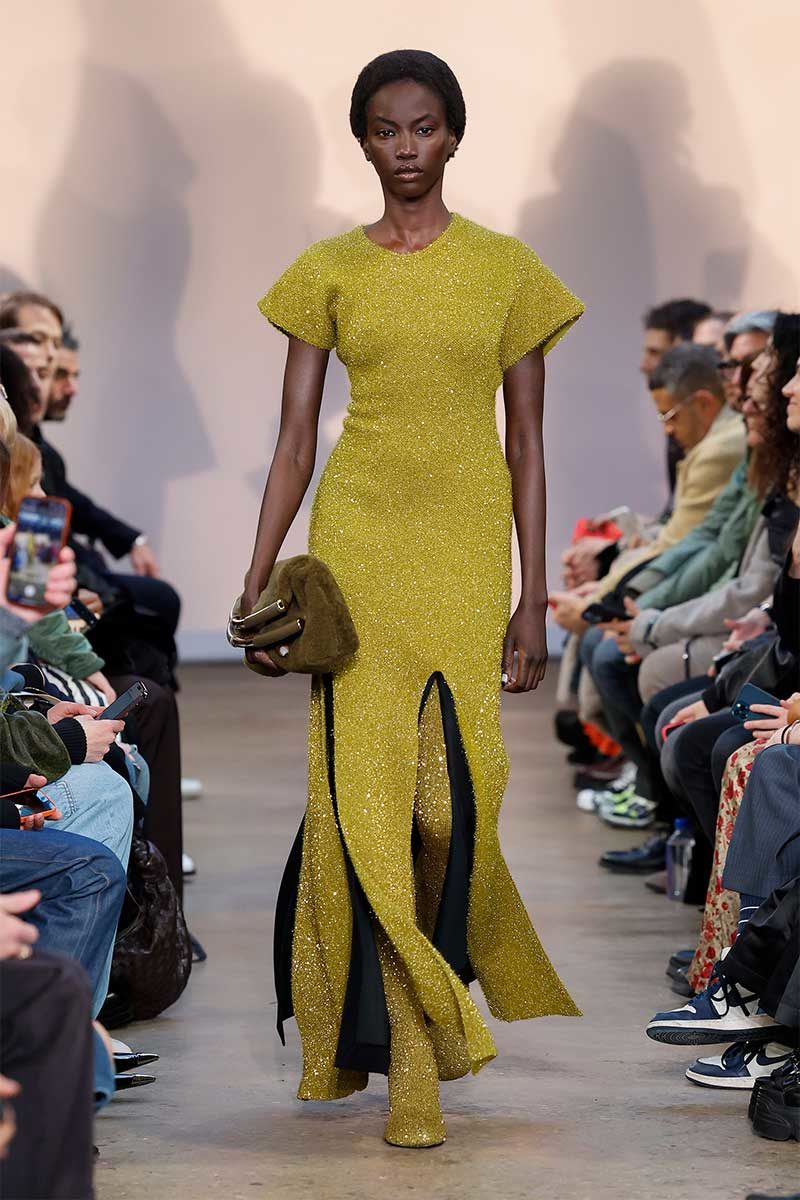
7 / 9

8 / 9

